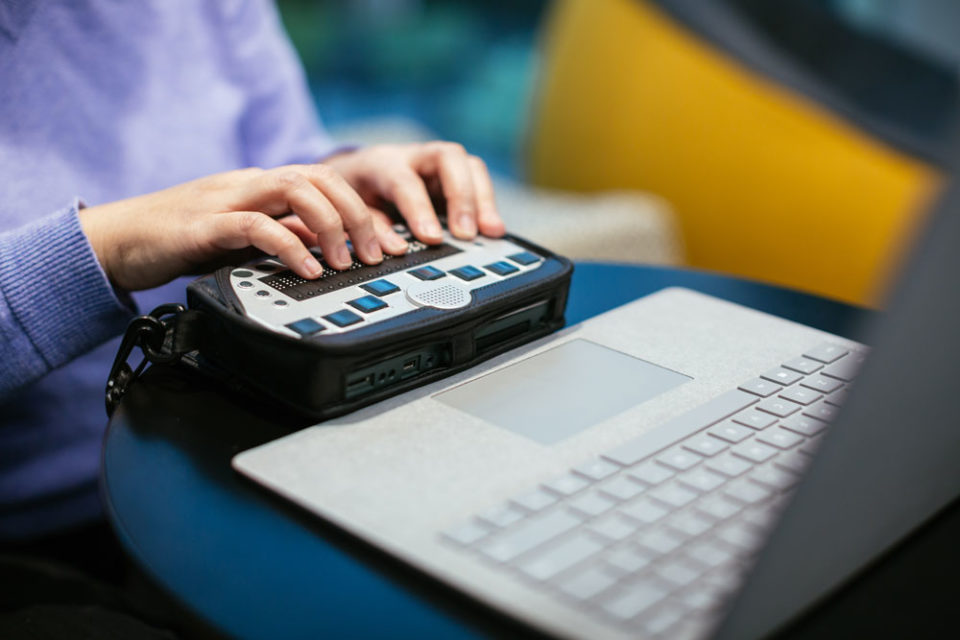It’s important to take a moment each year to reflect on the strides taken by businesses and governments to improve humanity and liveability for all individuals. As the world commemorates Global Accessibility Awareness Day in May each year, we at Microsoft are encouraged to discuss the ways in which technology is empowering people all over the world to achieve more.
As a technology company, Microsoft recognises the power of digital tools and solutions to reach and empower the underserved and underrepresented, giving them access to tools that change the ways in which they live their lives. In particular, we understand the importance of empowering people living with disabilities.
According to the World Bank, one billion people – or about 15 percent of the world’s population – experience some sort of disability. Disability prevalence is also higher for developing countries, many of which are situated in the Middle East and Africa (MEA) region.
Grounded in our accessibility principles of transparency, accountability and inclusion, Microsoft is working to provide accessible technology and promote an inclusive culture companywide to help ensure our products effectively meet the needs of all our customers. We do this because we believe there are no limits to what people can achieve when technology reflects the diversity of everyone who uses it.
Accessibility starts at home
It is for this reason that Microsoft is striving to promote an inclusive culture companywide. Our global teams work tirelessly to put processes in place that create and sustain a diverse and inclusive culture. This includes; attracting and recruiting people with disabilities via our global Inclusive Hiring Program; training managers to understand the needs of those with visible and non-visible disabilities; assessing people for roles with more flexibly so those with disabilities have the best opportunity to show their skills; adjusting workplaces to include sign language interpreters; and ensuring all staff have access to disability equality awareness training.
One such program is Ability Hack, an annual one-week Hackathon that brings together employees from across the company to hack solutions to some of the world biggest challenges. The Ability Hack focuses on programs that enable people with disability through technology.
We also have accessibility roles across a variety of disciplines. Our inclusive hiring career site provides details on hot jobs, upcoming events, employee stories and frequently asked questions for candidates with disabilities, as well as a disability hiring toolkit for recruiters, information about the Microsoft Autism Hiring Program, and other resources.
Creating accessibility infused products
Through the efforts of our engineers and accessibility experts, Microsoft endeavours to meet or exceed new accessibility requirements. Leveraging technology like artificial intelligence (AI) – which we consider to be a catalyst for inclusion – Microsoft is taking innovations that at first glance could help a small group in society and expanding them out.
What AI does is it enables technology companies like Microsoft to develop products and service that can perceive, learn, reason, and assist users all over the planet – including individuals living with disability. That is why Microsoft is infusing AI into its products, such as; real-time speech-to-text transcription, visual recognition services, and predictive text functionality that will empower people living with vision, hearing, cognitive learning, and mental disabilities.
This is evident in features like Magnifier, which makes part or an entire screen bigger, so users can see words and images better, and the Xbox Adaptive Controller, which empowers gamers with limited mobility.
We also added Input Learning Mode in the Narrator feature to give users the ability to send commands from a keyboard, touch or braille display, and receive feedback about what the command does without invoking the command. Narrator was further enhanced to include Intelligent Image descriptions, giving Narrator the ability to use AI to generate descriptions for images that lack alternative text on demand.
Finally, in our Edge internet browser, the Read Aloud feature, which reads out any website, is available for anyone to use. At present, 10 million people use this feature every month for a number of reasons from vision impairment to dyslexia, as well as boosting general productivity.
Technology for accessibility – it can happen for MEA
Armed with products and solutions powered by AI, there is no limit to what people in MEA can achieve. That’s why Microsoft launched the AI for Accessibility initiative, which aims to amplify human capability through grants, investments of technology, and expertise. We are looking for individuals or teams who are not only passionate about making the world more inclusive, but also firmly rooted in the communities they intend to benefit. We want to invest in ideas that are developed by or with people with disabilities. If you have such ideas, apply for our AI for Accessibility grant here.
At Microsoft, we believe that accessibility to the right technology is a powerful force for inclusion, and we are on a mission of enablement and empowerment for all people with disabilities in the Middle East, Africa and all over the world.





